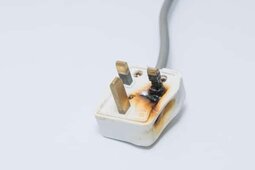I’m currently looking to add some limited battery storage capacity to my solar system and looking for some thoughts / sugestions.
I have about 7KW of panels on an East / West configuration, producing roughly 5KW on the AC side. I’m exporting up to 16A (3.6-4KW) according to G98 limits and my battery charger is 1KW variable.
The battery backup is planned to stay in standby, mostly serving as a UPS for citical loads, though I will provision for the capacity to inject up to 500W into the grid to offset some consumption in the summer, after sun hours. I don't need a massivelly high capacity - But given they are a fire hazard I'm playing with the tradebacks of smaller vs larger size.
Large size
- Oversized enough that I'm always pushing power in / out at a low C rate for safety and longevity purposes.
- Peak power is able to instantly trip any fuses in case of a failure
- Internal failure means there is a large chance something will get severely damaged in the event of a fire.
Smaller size
- Lower fire risk in case of internal fault
- Lower longevity as cells with be cycled at higher C rates
- Higher fire risk as cells will tend to warm up quicker due to higher C rates
Next on, I started by looking into the batteries themselves, which run roughly into £1000/5KW as a final product with enclusure and BMS. At the same time I'm finding the bare batteries going for about the same price, but at 3x the capacity (320Ah). A BMS and an enclosure are not expensive enough to make up the difference, so what's the catch?
I ordered some from a brand called PWOD. Not so glowing reviews here, but good reviews on AliExpress. I'm having cold feet on that as the concensus is that Ali doesn't deal well with expensive returns and probably I should have dealt with manufacturer directly. Let's see and learn from that... I've went with the manufacturer direct back in 2014 ago on another project and also had to pay upfront, but at least the cells live to this day, altough lightly cycled.
Any advices on BMS? 16S, I want to have programmable cut off values. I was thinking Dali Smart BMS, but open to others. Charge / Discharge up to 1KW in a 48V system, so roughly 20A, but needs to be able to deal with fault transients without shorting our the mosfets. During winter the panels may be covered by snow for extended periods, so I would like the BMS to go dormant and self restart when charge is detected.
I'm also wondering what are your views on open vs enclosed batteries. Ideally I would like to have mines open, as hotspots always form on the inner cells of a pack, plus with an open enclosure I could regularly go to check the cell voltages and any swelling / leeks during rotine inspection.
These batteries will be installed on a basement, so year round temperatures are 3-15C. Pretty confortable for LiFePO4.
I have about 7KW of panels on an East / West configuration, producing roughly 5KW on the AC side. I’m exporting up to 16A (3.6-4KW) according to G98 limits and my battery charger is 1KW variable.
The battery backup is planned to stay in standby, mostly serving as a UPS for citical loads, though I will provision for the capacity to inject up to 500W into the grid to offset some consumption in the summer, after sun hours. I don't need a massivelly high capacity - But given they are a fire hazard I'm playing with the tradebacks of smaller vs larger size.
Large size
- Oversized enough that I'm always pushing power in / out at a low C rate for safety and longevity purposes.
- Peak power is able to instantly trip any fuses in case of a failure
- Internal failure means there is a large chance something will get severely damaged in the event of a fire.
Smaller size
- Lower fire risk in case of internal fault
- Lower longevity as cells with be cycled at higher C rates
- Higher fire risk as cells will tend to warm up quicker due to higher C rates
Next on, I started by looking into the batteries themselves, which run roughly into £1000/5KW as a final product with enclusure and BMS. At the same time I'm finding the bare batteries going for about the same price, but at 3x the capacity (320Ah). A BMS and an enclosure are not expensive enough to make up the difference, so what's the catch?
I ordered some from a brand called PWOD. Not so glowing reviews here, but good reviews on AliExpress. I'm having cold feet on that as the concensus is that Ali doesn't deal well with expensive returns and probably I should have dealt with manufacturer directly. Let's see and learn from that... I've went with the manufacturer direct back in 2014 ago on another project and also had to pay upfront, but at least the cells live to this day, altough lightly cycled.
Any advices on BMS? 16S, I want to have programmable cut off values. I was thinking Dali Smart BMS, but open to others. Charge / Discharge up to 1KW in a 48V system, so roughly 20A, but needs to be able to deal with fault transients without shorting our the mosfets. During winter the panels may be covered by snow for extended periods, so I would like the BMS to go dormant and self restart when charge is detected.
I'm also wondering what are your views on open vs enclosed batteries. Ideally I would like to have mines open, as hotspots always form on the inner cells of a pack, plus with an open enclosure I could regularly go to check the cell voltages and any swelling / leeks during rotine inspection.
These batteries will be installed on a basement, so year round temperatures are 3-15C. Pretty confortable for LiFePO4.
Last edited:








